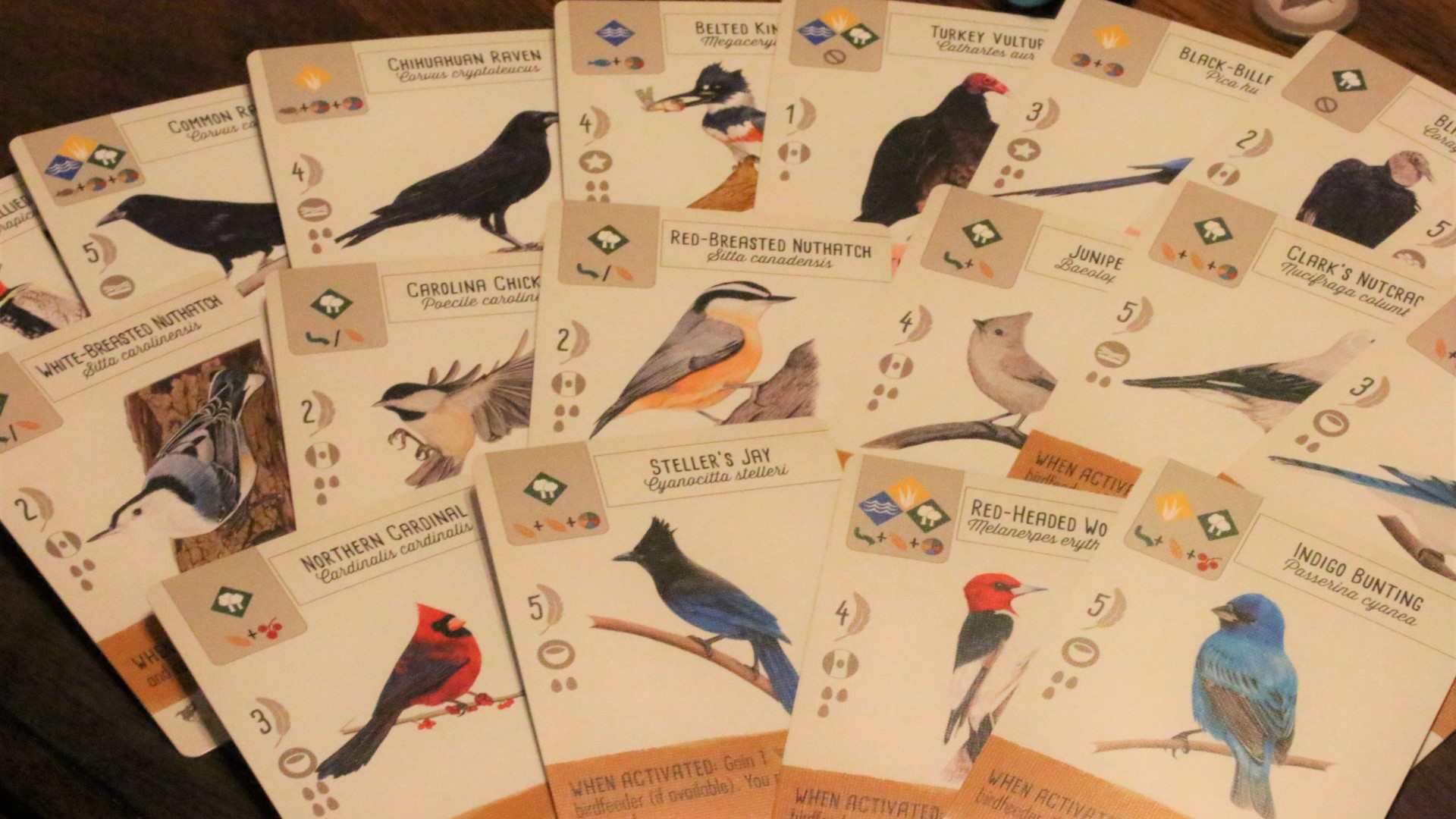Our Verdict
Wingspan is a gorgeous game that also plays great, with tons of variety and satisfying engine-building.
Wingspan has so successfully established its place in the boardgaming landscape that it’s hard to believe it only came out in 2019. In just a few short years of existence, it has built a rock solid home for itself, a titanium nest, in the hearts and on the shelves of thousands of hobbyists. It even appeared on British soap opera Coronation Street, which fully cements it as one of those board games that’s a household name even among non-gamers.
So, does bird-collecting board game Wingspan deserve to have taken off so dramatically? Does this easy-to-learn engine building card game live up to the hype and earn its spot on our best board games list? Should you take a look at the several Wingspan expansions on offer? We think so, and here’s why.
Wingspan is a great game, but where it perhaps succeeds most dramatically is its aesthetic. Produced by Stonemaier Games, Wingspan is a work of art, and plays to its theme beautifully. It just oozes charm from every pore, and its bright and pleasant concept is communicated everywhere.
It’s not just the cards, featuring feathered friends and with bird facts to boot, that are lovely. Every component is just so inviting, from the dice tower shaped like a birdhouse, to the bright, pastel-coloured eggs that I constantly have to resist the urge to pop in my mouth. Wingspan is a gateway board game that makes the job of getting people to actually sit down at the table and try something complicated a thousand times easier, simply thanks to how it looks and feels.
The beak-based theme of Wingspan is one that seems to have a certain universal appeal – collecting food to attract different birds to your habitats is both wholesome and appeals to the collector inside all of us. True it often doesn’t make perfect sense: for instance, it’s a bit weird that you have to bribe birds with eggs to get them on the board. But this is easy to overlook when their are other great elements that are so on-theme, like birds of prey that need to find smaller birds to eat, or cuckoos that lay eggs in other birds’ nests.

It’s a great game too, once you actually start playing. Wingspan is easy to learn, but very difficult to master thanks to the sheer number of ways there are to earn points. Each of your turns is full of tricky but exciting decision making, as your strategy must take into account the bird cards you have in hand, the food available to pay for them, the bonus objectives that’ll score you points each round, as well as your personal bonus card that provides a unique objective. All these factors mean it can be impossible to know who’s winning until the game ends, but it also provides a ton of variety, and ensures no two games of Wingspan ever pan out the same.
Wingspan is also satisfying in the way that only engine building games can be. Your bird-powered card-drawing, food-making, egg-laying, point-scoring machine starts out very slow, and your turns are very simple. But by the end of the game you’re raking in resources, triggering chain reactions of avian abilities, in a very gratifying culmination of your long-term strategy. The game has a feeling of accelerating to a crescendo, as later rounds are fuller, but each one has fewer turns than the last.
My only real criticism of Wingspan is that I think it’s an incredible production on top of an only very good game. There’s little interaction between players, so Wingspan works best with a lower player count, to keep the game moving. And luck plays a considerable role; sometimes, even a skilled player will be left flapping feebly in the dust due to a poor starting hand and bad draws.
Nonetheless, Wingspan is always fun: not too tough to be intimidating, but always challenging enough to be interesting. And did I mention how easy it is on the eyes? Who’s a pretty boy, then? You are Wingspan. You are.


